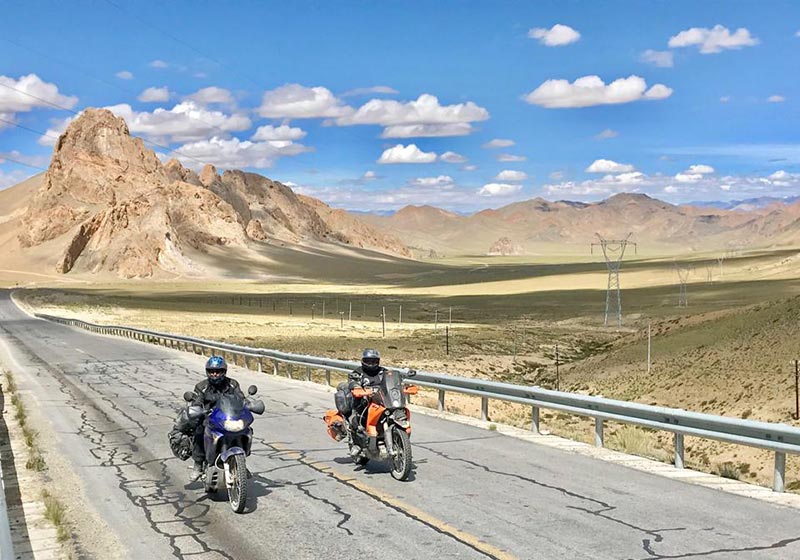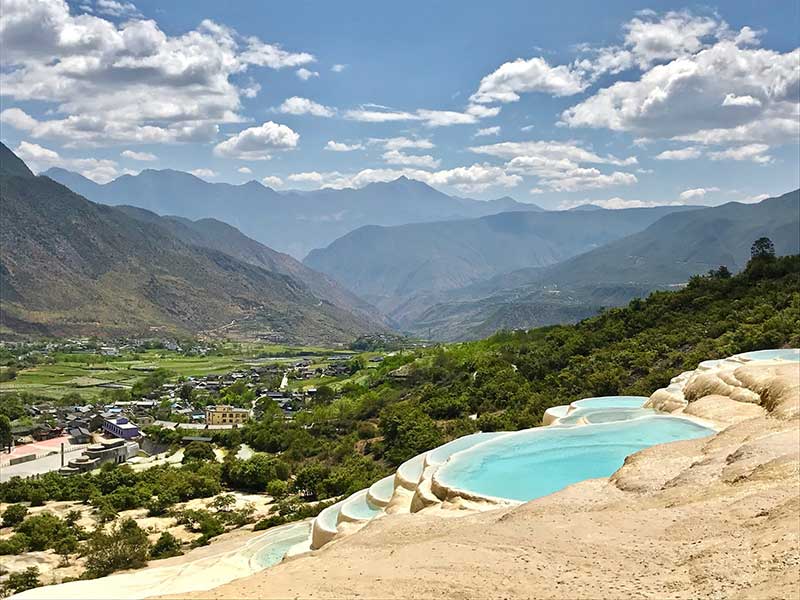CHINAis a country like no other, having seen an incomparable rise on the world stage in the past 30 years. From the power center Beijing with its Great Wall and the Forbidden City to the densely populated east coast with economic zones and ports near Shanghai to high Himalayan peaks and deserted mountain landscapes in Sichuan and the mighty rivers and rice fields of the Yunnan province in the subtropics, China offers an incredible spectrum of landscapes and adventures. And China’s soul is just as diverse as its geography, conflicted with yesterday, today, tomorrow, living between the Maoist past, economic growth, opening up to the west and the desire for freedom. On our China motorcycle tours we show you the whole exciting spectrum of the Middle Kingdom, authentically and on dramatic and dreamy routes – and through areas that hardly a “normal” tourist has ever seen.
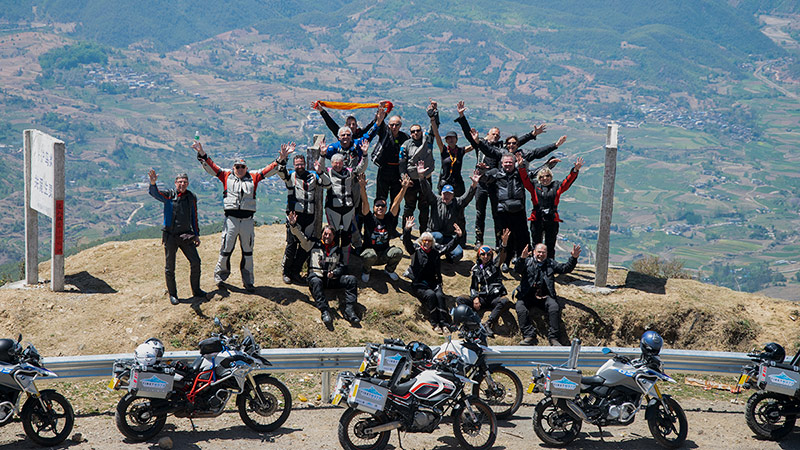
South of the Clouds
SOUTH WEST CHINA
27.10. – 10.11.2024
The South of the Clouds tour has been our most popular China motorcycle tour since 2016. We’ve now given it a thorough rework, adding new roads and mountain passes for an even more exciting and varied experience. The ride takes us through previously untraveled regions, including the greatest highlights and motorcycling routes of China’s southwestern regions. China is a huge country that covers roughly the same area as the United States. Its striking contrasts include expanses of desert and steppe, the highest mountains in the world, and the vast megacities and ports of the east coast.

Yunnan Highlights Tour
SOUTH WEST CHINA
The Yunnan Highlights tour is one of our most popular China motorcycle tours. This ride takes us through previously untraveled regions, including the greatest highlights and motorcycling routes of China’s southwestern regions. In Yunnan, you can still get a feel for the authentic China as it was before the transformation of recent decades. The landscapes on this motorcycle tour through Yunnan are so varied that it’s like a continent to itself. Yunnan is the northern neighbour of Myanmar, Laos and Vietnam, a region of towering mountains, gorges and rice terraces.
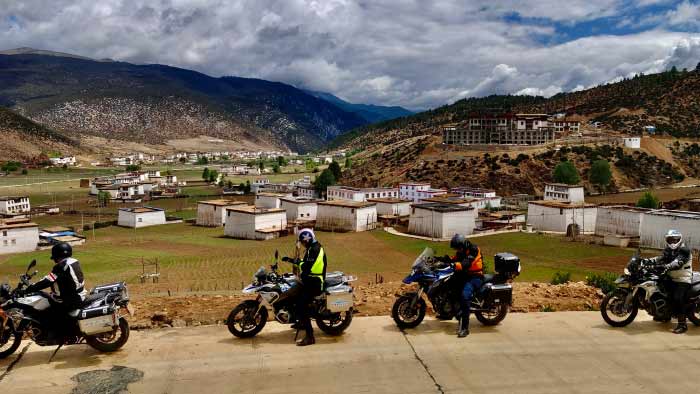
Himalayan Horizon Adventure
SICHUAN
Discover the hidden highlights of the Tibetan Himalayan areas in western Sichuan. This Sichuan motorcycle tour takes you to remote and winding mountain roads, across high passes and into the areas of the Tibetan nomads. Highlights are the wide Haizi Lake Plateau at over 4,000 meters, the northern and southern Sichuan-Tibet “Highway” with endless winding roads and, as a cultural highlight, the famous Dege printing press, where Tibetan sacred texts have been printed for centuries.
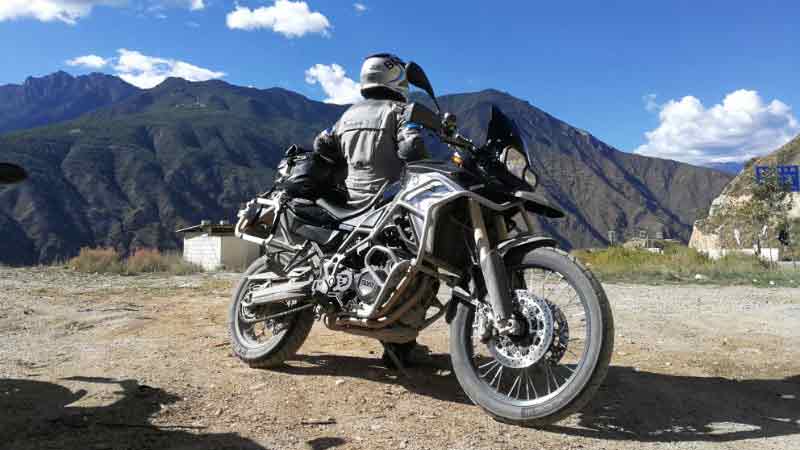
On the Dragon´s Backbone
SOUTH CHINA
States an ancient Chinese poem. We put the poem to the acid test and the outcome is our brand new On the Dragon´s Backbone South China Motorbike Tour. This China motorbike tour deep into the Karst mountains and river landscapes in the very south of the Middle Kingdom is a curvy roller coaster ride you will remember for a long time. Our countryside roads lead us through the largest rice terraces on earth, along vast tea plantations, almost forgotten villages and to the bamboo boats of the Li river at Yangshuo – the landmark of South China and unforgettable endpoint of a fantastic journey.
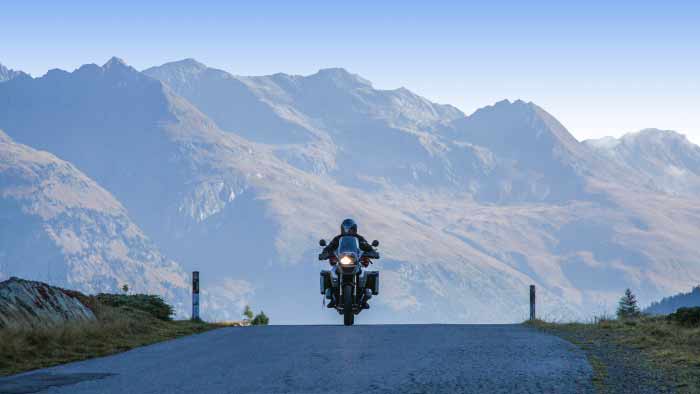
At the Roof of the World
CHINA
This motorbike tour is an adventure for connoiseurs and the ones who are widely traveled. We will cross the Tibetan Eastern Himalayas and are riding through the four provinces Yunnan, Sichuan, Gansu and Qinghai. The always sinuous mountain roads will lead us through exciting changes in culture and landscape, changes that are so manifold and high in contrast that it is like driving through a whole continent. We will discover the graslands of the nomads, will crisscross through sand and stone deserts, go up over the highest passes of the Himalayas and down along the longest rivers of asia, the Yangtze and famous Yellow river.
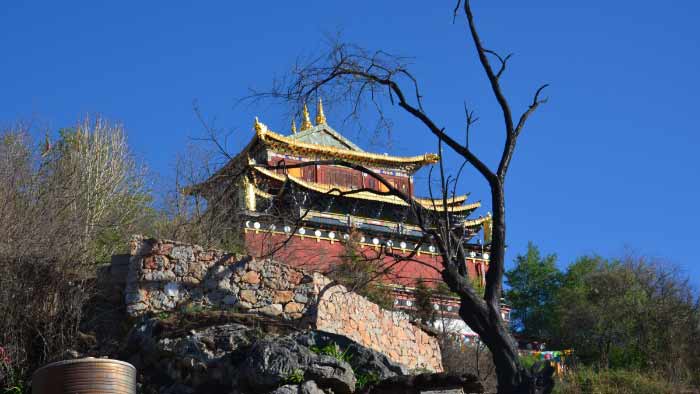
North Yunnan Motorcycle Tour
CHINA
This tour brings you to historic Tea Horse Road, old towns of Lijiang, Shanxi, Dali and Shangri-la, little villages at the border to Tibet, drive through one of the deepest gorges in the world and snow capped mountains. The diversity of the landscape is stunning: experience the wide Tibetan grassland, cactus-lined curvy gorge roads or a ride along the vast Erhai Lake. Extend this trip and dine with a local Tibetan family and take a glimpse at the peak of high and holy Mt. Kawa Karpo (6.700m) in the Himalayas.
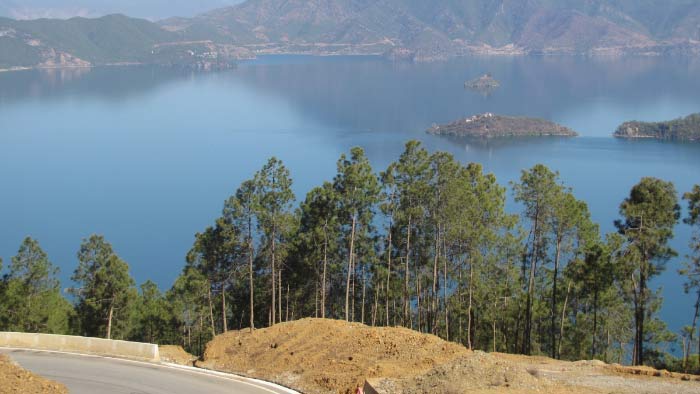
Beyond Off The Beaten Track
CHINA
This adventure let you experience remote countryside roads in one of the most beautiful regions of Yunnan. We follow hundreds of kilometers the azure blue Yangtze River through deep gorges, curvy tarmac roads and some of the most beautiful old towns China has to offer. Ride and rest with us next to 5500 meter high mountains and pure nature.
Guided Motorcycle Tours through China
Start your Adventure!
China, or the Middle Kingdom, as the ancient Chinese once called their country, is almost as large as the U.S.A., however, with just under 1.4 billion people, it is home to almost four times as many inhabitants. The majority of the Chinese live in the densely populated cities of the east coast and inland – however, we at Tibetmoto Tours offer our China motorcycle tours in the south-west of the country, through the wonderful regions and mountains of the provinces of Yunnan, Sichuan, Qinghai and Guangxi.
Due to its size, China offers diverse regions and travel destinations like no other country on earth. From the massive mountain ranges of the Himalayas to subtropical and tropical areas, you will find dream destinations that can be experienced best by motorcycle. For beginners and experienced riders, we recommend the provinces of Tibet and Yunnan as well as the entire region of the Silk Road, where we do a lot of tours every year.
Buddhist monasteries and temples, snow-capped mountains and vast lakes, rivers such as the Yangtze and the Mekong offer fascinating highlights on each of our tours. On your China motorcycle tour with Tibetmoto Tours you can also meet Tibetan nomads or the inhabitants of half-forgotten villages and enjoy relaxing evenings after a long day on the bike.
Unfortunately, the Western press mostly only writes about the economic power of China and in this context about a high traffic density and sometimes heavy pollution. However, this only applies to a maximum of 20 percent of the country. Unfortunately, very little is heard of the other 80 percent of beautiful landscapes in China and the hospitality and warmth of the people. The best way to find out on your motorcycle tour China is with Tibetmoto Tours.
Here on this page you will find detailed information about your motorcycle tour in China. We offer fixed dates, but we also provide individual tours. All of our tours have one thing in common: they provide a deep insight into the culture of China and ensure an experience that remains unforgettable.
Questions & Answers
All our itineraries give you a good overview what you will experience and discover when booking with tibetmoto. The itineraries are nevertheless best understood if they are seen as a suggestion rather than as a 100% planned and a thousand times done way of traveling. We like to keep every tour, every adventure, every trip unique and special. We are proud to say that we have never done a trip two times exactly the same way. Our team does not like to offer mainstream tourism tours, and we believe that people enjoy their time best when they have freedom and possibilities to choose from. Freedom and flexibility are very good ingredients to cook an exceptional discovery or adventure, to meet unusual people and visit off-the-beaten-track places.
After arriving at the camp ground we pitch up the tents, our team will set up the mobile kitchen, the electricity generator is being started and we can think of having a cold beer. All supplies and the luggage is carried by our supply truck. We do not have always pre-chosen camp grounds which are always frequented by us, since every expedition is different. Depending on the time in the afternoon we start looking for “the perfect spot”. Perfect spots have a water source such as a river or a lake and a flat piece of land for the tents. Some spots we use more frequently since they are so perfect that the location is hard to beat. Camping together with nomads offers an opportunity to experience their way of live, culture and habits. Sitting in the evening together in a nomad tent somewhere on the Tibetan grassland and listening to Tibetan nomads` songs is a truly genuine experience.
Dinner is being served in a large dining tent where we have tables and chairs to comfortably sit together, eat and drink. The separate, smaller, sleeping tents are designed to accommodate each two people, but if you choose the “single room” option (you will find that option below each expedition itinerary) you will have your own tent. Our tents are army tents where you can almost stand upright. The sleeping “hard wear” is a foldable army field bed, which puts your body about knee height away from the ground. We provide you with the entire hard wear, plus blankets and insulation mats. The only item you should bring along is your personal sleeping bag. If you don´t want to bring your sleeping bag all the way to China we can provide you with a new sleeping bag for a reasonable price.
You will need your passport, a pass picture, national driving license, international driving license and flight ticket. Please be sure to make photocopies of all of your important travel documents and carry them separately. They can be invaluable in an emergency.
We also need a scan of the Chinese visa six weeks before the tour starts.
All scanned documents should be sent to us on an A4 sheet of original size
A home stay is an opportunity to get access into another culture by joining the host family for dinner and breakfast and sleep under their roof, as their guest. Most families live together in a several generation house, from children to old grandparents. A lot of home stays are semi-farms with at least a few cattle such as chicken and cows around the house. Often are fields attached where family member go to work after breakfast. Here, local family and work life can be experienced as it is instead of “only” observing it from the outside.
We believe that joining a home stay is on of the best ways to get in touch which what surrounds you in a foreign country.
For the Tibet and China motorcycle tour you need a valid national and international driver’s license.
In China, the currency is the CNY (Chinese Renminbi). The exchange rate is around 1€ to 7.56 CNY (as of 05/2020). The CNY is not a freely convertible currency, so you cannot get it at every bank in Europe. The exchange rate, which is determined by the Bank of China, can be observed under the following link: http://www.boc.cn/sourcedb/whpj/enindex.html
However, we recommend withdrawing a larger amount of CNY from an ATM with all major credit cards or debit cards after arriving in China. Our on-site tour guide is happy to help. Due to the often very poor exchange rate for the CNY in Europe, it is not worthwhile to exchange significant amounts of CNY in Europe. There are also many ATMs in Lhasa where you can withdraw money. Our experience shows that the majority of our participants spend around 20€ a day.
The luggage will be transported in the support vehicle. Don’t forget that on domestic flights, the pastries usually cannot exceed 20 kg!
For a motorcycle tour you should bring motorcycle clothing including a helmet. Of course you also should pack warm clothing (as layers or as undersuit). It can get cold! You should also bring gloves and a rain suit.
The roads on the motorcycle tour are mostly paved (with a few exceptions). Due to the new asphalting of road sections, it can temporarily lead to a poor condition of the road. The paved roads are mostly in good condition. However, there may be isolated potholes or gravel lying on the ground. The route on the motorcycle tour also includes sections with new asphalt, on which you can enjoy European standards or even better. These routes are wonderful to ride! Due to moisture and the difficult to see oil or diesel traces, however, extreme caution is always required!
Deposit for a rental motorcycle (partial cover):
The following cash deposits are required:
Shineray X5 400: EUR 500
BMW G 310 GS: EUR 1,000
BMW F 800 GS: EUR 1,500
If the participant/motorcyclist causes damage during the Tibet motorcycle tour, the deposit is the maximum amount.
Entry/Visa:
All participants in the Tibet and China motorcycle tours require a visa to enter China. The passport must be valid for another six months. You have to apply for the visa yourself at a service center, the Chinese embassy or on behalf of an agency. Due to frequent changes in the application procedure, we recommend that you use an agency. This is slightly more expensive than filing your own application, but it saves you a lot of work and time.
We will apply for all of the necessary Tibet permits for the motorcycle tour.
Read our Blog Posts!


